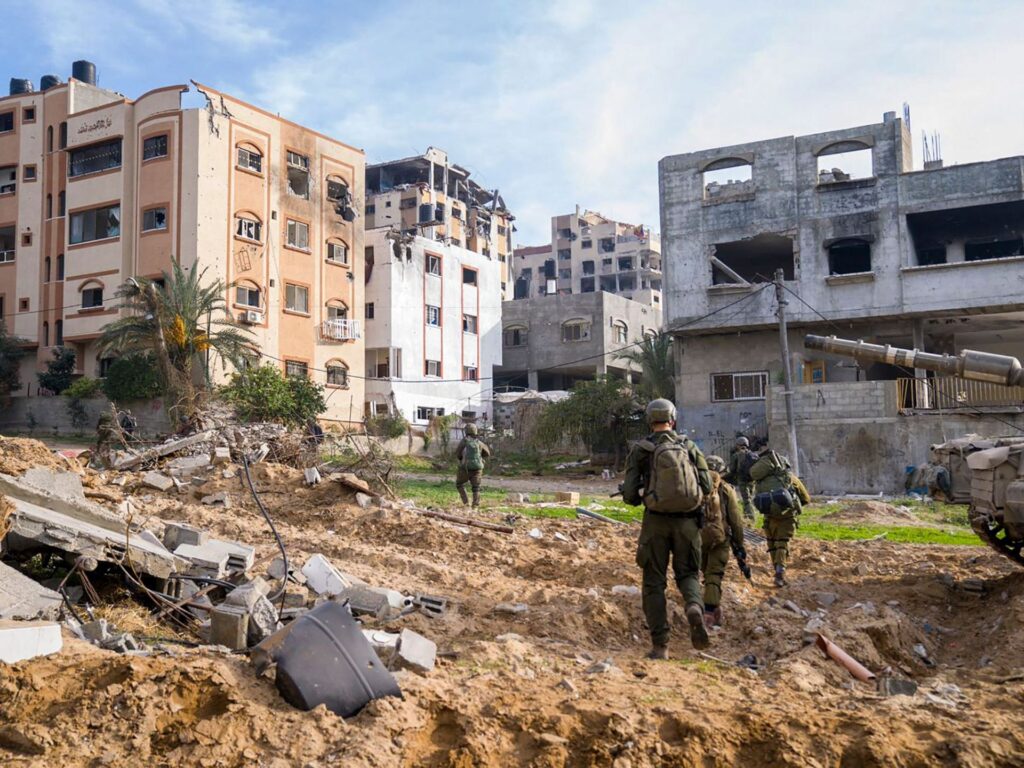Ofir Gendelman, spokesman for the Israeli Prime Minister, said today that the war in Gaza can be ended “on the condition that the leaders of the Islamic Resistance Movement (Hamas) surrender themselves to the Israeli army, and the prisoners are returned from Gaza,” while Hamas leaders affirm that “the resistance is equipped and strengthened with a popular incubator and there is no fear for it.” “.
Gendelman said in press statements, “At the field level, our forces are advancing in the southern Gaza Strip and surrounded the house of Hamas leader in the Strip, Yahya Sinwar, and the mission of these forces is to arrest him as quickly as possible.”
Netanyahu’s spokesman added, “Our forces breached Hamas’ defensive lines in Jabalia, in Shuja’iya in the north of the Gaza Strip, and in the south the city of Khan Yunis was surrounded and besieged.”
Gendelman claimed that the Israeli army “had its hands on large quantities of long-range missiles and missiles in the northern Gaza Strip,” and said, “These spoils were transferred to Israel.”
In response to United Nations Secretary-General Antonio Guterres’ call for a ceasefire in Gaza, Gendelman said, “The call for a ceasefire now is tantamount to a call to keep Hamas’ rule in Gaza in place. We categorically reject that.”
The Israeli spokesman stated that the Netanyahu government is exerting pressure so that the Red Cross can visit Israeli prisoners in Gaza.
On the other hand, Hamas says that the occupation will fail to achieve the goals it set for itself, which are “liberating the prisoners and what it calls the elimination of Hamas.”
Saleh Al-Arouri, deputy head of Hamas’s political bureau, said that the resistance “is equipped and reinforced with a popular incubator,” stressing, “There is no fear or anxiety for the resistance, and it will prevail.”
Al-Arouri stressed that the next title of the war will not be “After Hamas,” but rather, “How can we get rid of the impasse and quagmire into which the occupation has sunk?”
A few days ago, the Al-Qassam Brigades, the military wing of the Hamas movement, announced that it was waging battles with the Israeli occupation forces in the eastern Khan Yunis axis, and that it had sniped and targeted a number of soldiers and vehicles, causing losses.
Israeli Defense Minister Yoav Galant admitted, during a press conference, the day before yesterday, Tuesday, that he had paid “very high prices” since the start of the war on the Gaza Strip on October 7.
In response to “daily Israeli attacks against the Palestinian people and their sanctities,” on October 7, Hamas launched an attack targeting settlements and military bases around Gaza, killing about 1,200 Israelis, wounding about 5,431, and capturing 239, exchanging dozens of them, during a humanitarian truce that lasted 7 days until December 1. The first is ongoing, with Israel, which holds 7,800 Palestinians in its prisons.
Following the Al-Aqsa flood attack, the Israeli army launched a devastating war on the Gaza Strip, leaving more than 17,000 martyrs, in addition to massive destruction of infrastructure and an “unprecedented humanitarian catastrophe,” according to official Palestinian and UN sources.

